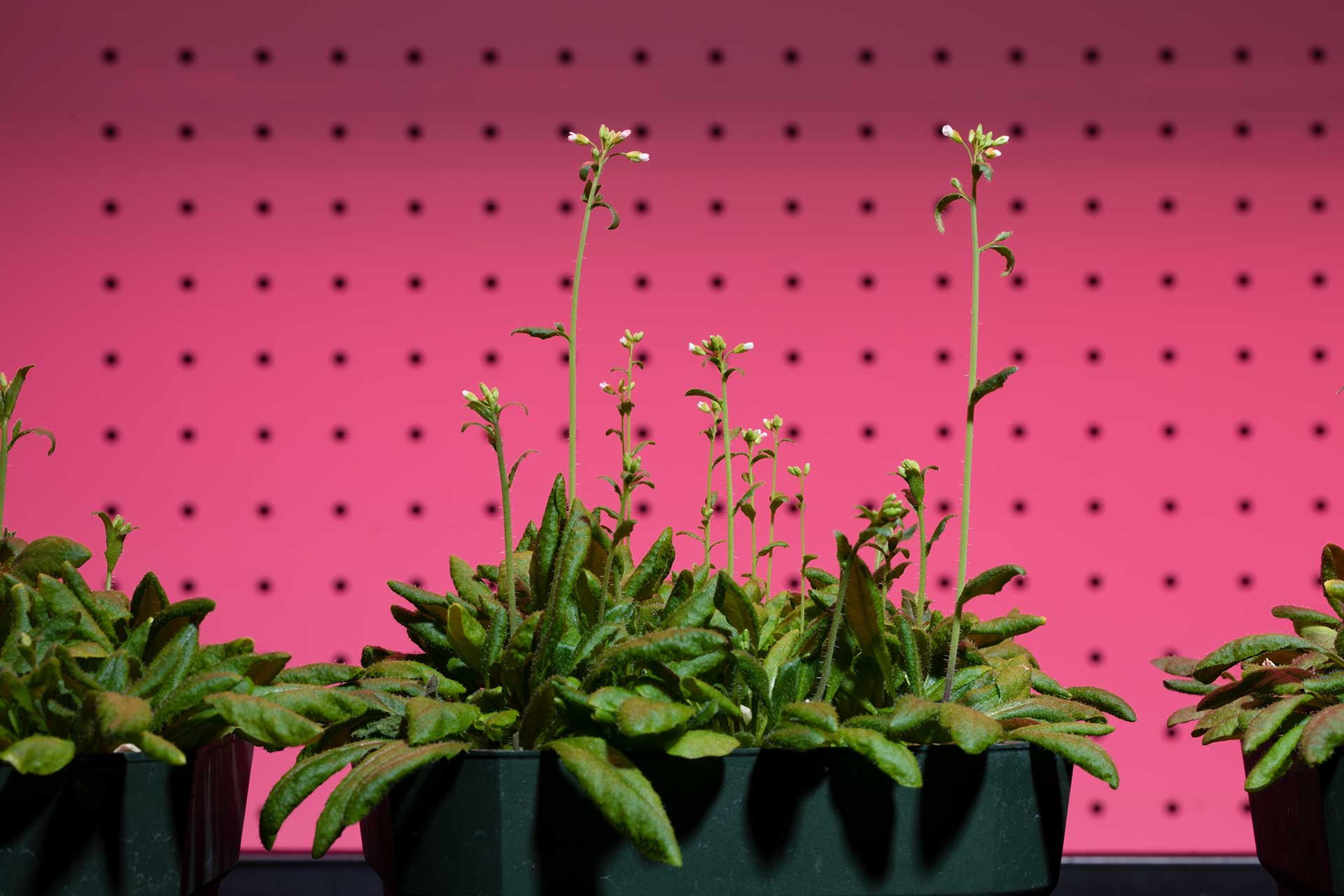
If every science professor were asked to describe her research focus as a superpower, Assistant Professor of Biology Jeeyon Jeong would have a pretty good answer: she’s Iron Woman. Jeong studies the biology of metals and specializes in the movement of iron within plants. One day, the findings from her lab may protect human health. The applications of her research may even help save the planet.
In 2018, the National Science Foundation awarded Jeong a three-year, $462,395 grant to support her experiments on “iron homeostasis,” or how molecular iron is stored and transported within plant cells. Currently, more than 30 percent of the world’s population suffers from iron deficiency and relies on plant-based diets that are iron-poor. One answer to this problem is biofortification, or breeding more robust crops that have more of the nutrients that humans need.

“If the genetics of a plant species is well understood, plants can be selectively bred,” says Jeong. “Then that [plant] fortification process can occur naturally.” This could help reduce global iron deficiency in a way that is both sustainable and widely affordable.
Like zinc or copper, iron is a micronutrient—essential to life and needed only in tiny amounts. Yet it can be a challenge for plants and animals to get enough iron because both have difficulty absorbing it. Most organisms also lack the ability to excrete iron. So an iron overload can be just as dangerous as an iron deficiency. If iron or its chemical byproducts become too plentiful within an organism, it can be toxic.
The distribution of iron within a cell also needs to be exactly right. “Depending on the compartment that it’s in, the mineral can be beneficial,” says Jeong “If it’s in the wrong compartment, it can be toxic, even if levels are the same.”
If this sounds like a puzzle, that’s because it is. “Iron trafficking,” or how and why iron changes into different chemical states as it is transported across cell compartments, is not well understood. Another mystery is how iron moves in and out of the cell’s mitochondria, which require a high level of iron to function.

The NSF grant will allow Jeong to focus on the biochemical function of the iron-loving mitochondria—which are, ironically, quite susceptible to iron overload. She will conduct large-scale studies using Arabidopsis, better known as the mustard plant, which grows quickly and has a fully sequenced genome.
By 2021, Jeong expects that her lab will have learned a lot more about how a plant’s naturally occurring iron-management systems affect its ability to thrive. The results ultimately will have broad application. No matter the organism, cellular mitochondria function in the same way; the same family of proteins that Jeong studies in the mustard plant also exists in other crop plants, and in the human body.
Jeong credits her Ph.D. training at Dartmouth and postdoctoral experience at the University of Wisconsin, Madison, for setting her on her current research path. As a postdoc, she also earned a Howard Hughes Medical Institute (HHMI) fellowship for scientists committed to undergraduate science education. That experience led Jeong to Amherst, which she describes as “a great fit,” because she can do the teaching she loves without giving up her research.
The NSF grant includes funding for Jeong to share her research at a local elementary school. She urges the Amherst students who accompany her to school presentations to try to make a personal connection with the children. “By fifth grade, a lot of kids think science is not for them,” says Jeong, which is why it’s so important to show them that scientists are “regular human beings.” When younger students can see parts of themselves in an Amherst biology major, they become more open to the possibility of majoring in science someday. And who knows? The encounter may even set them on the path to their own superpowers.